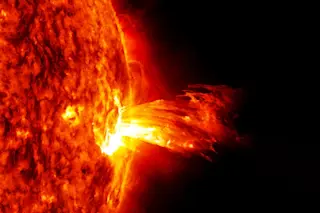The sound of scientific discovery isn't the clichéd "Eureka!" It's much more like this recent exclamation from NASA astrophysicist Alan Kogut:
“What the heck is this?” Dr. Kogut remembered exclaiming when he first saw the data. “This shouldn’t be here” [The New York Times].
Kogut was looking at a measurement of cosmic radio signals detected by sensitive antennas borne aloft in a balloon, which floated 21 miles above Texas for several hours. While scanning the sky, the instruments found
a booming, uniformly distributed radio noise six times louder than anyone had predicted.... The researchers calculate that the radio noise is much too large to be accounted for by the combined emissions of all the galaxies in the universe that emit radio waves [Science News].
When researchers started to contemplate where that signal may have come from, things began to get interesting. It's possible, says Kogut, that the radio waves may ...













